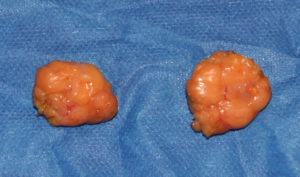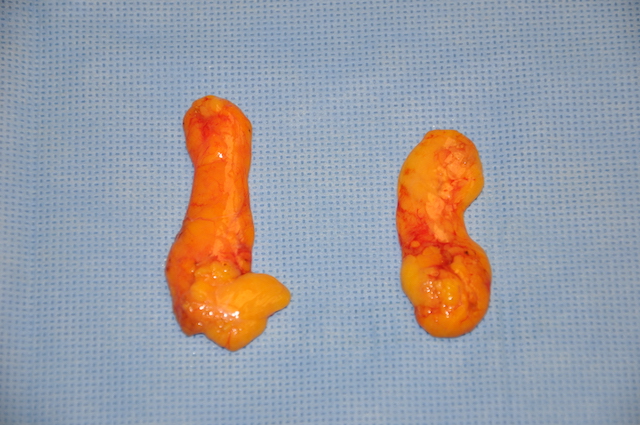
In the October 2019 issue of the Aesthetic Surgery Journal, an article was published on this topic entitled ‘Buccal Fat Pad Excision: Hydrodissection Technique’. In this paper the authors describe an alternative technique for buccal lipectomy procedures that uses a higher volume of local anesthetic than is traditionally described or used. In two groups of patients, one group A) had 15ml of local anesthetic (2% lidocaine with epinephine) per side vs the other group (B) which has 3mls per side. Intraoperative comparisons were done by surgical time and occurrence of bleeding as well as postoperative pain (visual analog 1 – 10 scale) at 2 and 72 hours after surgery. Patient followup was out to six months after surgery.
Operative pain in group A averaged 0.5 vs 1.3 in group B, 1.2 at 2 hrs in group A and 2.6 in group B. By 3 days after surgery, group A pain averaged 1.6 and 3.1 for group B. Mean operative times were less in group A than group B averaging around 9 minutes vs 14 minutes.
What this study shows is that if one is doing buccal lipectomies under local anesthesia, more local anesthesia is better than less. While seemingly intuitive, this study and the local anesthetic used does not factor in other types of local anesthetics that offer more profound and prolonged local aesthetic effects. Marcaine (Bupivicaine) with epinephrine and the addition of small amounts of Exparel can significantly extend the local anesthetic effects.
While buccal lipectomies can be performed fairly comfortably and effectively under local anesthesia, they rarely in my experience are performed as a solitary procedure. They most commonly are performed in conjunction with other facial reshaping procedures and thus are done under a general anesthetic.
Dr. Barry Eppley
Indianapolis, Indiana



